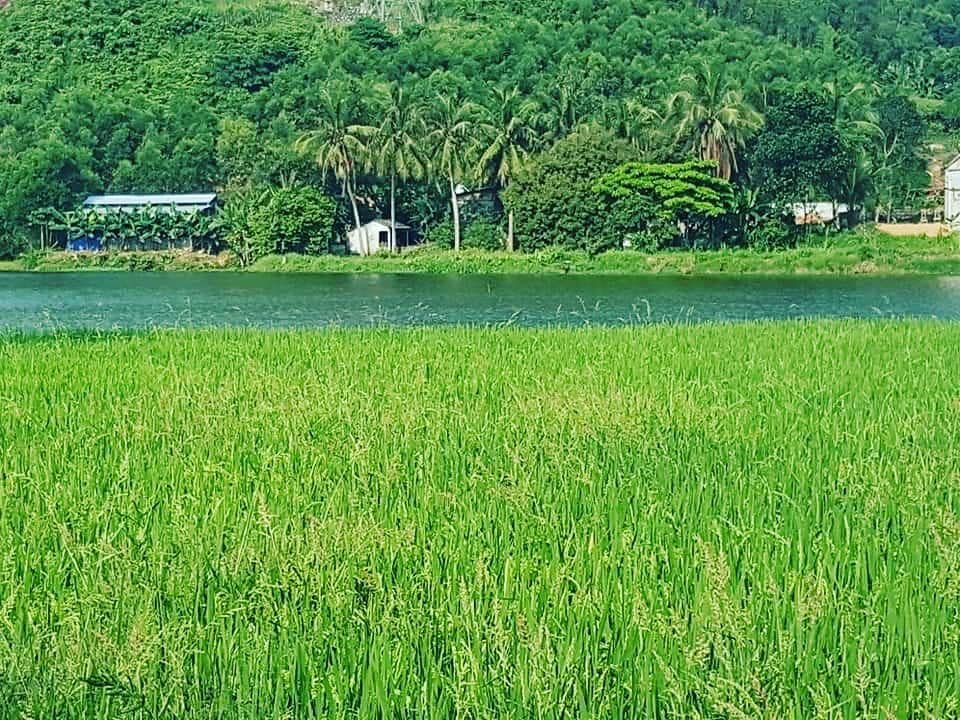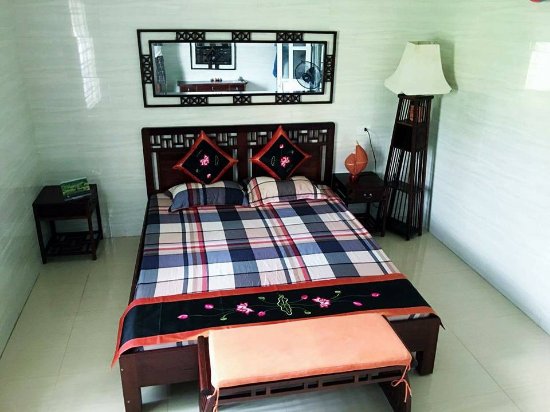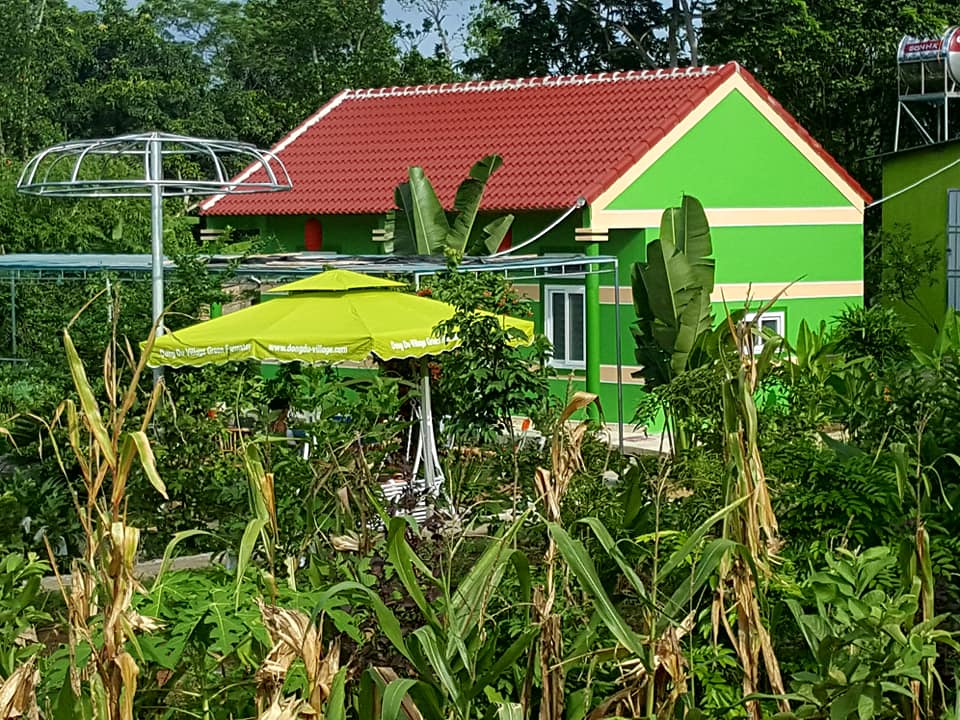Travel Blog
Dong Du Village Lakeside Farmstays
Explore Western Nghe An while staying in Dong Du Eco Farmstay
Updated: 19/3/2020 | 10:41:45 PM
Western Nghe An is a UNESCO biosphere reserve, located in Nghệ An Province in the tropical and temperate zone of Vietnam, and on the border with Laos. It was designated as a biosphere reserve in 2007, and recognised by UNESCO in 2011. It is one of eight recognised biospheres in Vietnam. Dong Du Eco Farmstay is a cozy and lovely place to relax during your visit to Western Nghe An
The Western Nghe An Biosphere Reserve is located in central Viet Nam in mountainous and remote area which is difficult to access. Its climate is strongly influenced by a north-east and south-west monsoon. The topography of the surrounding Annamite mountain range also impacts atmospheric circulation, resulting in significant climatic differences throughout the area. The region hosts some of the most diverse and rich flora and fauna in Viet Nam. Nghe An means governance in peace awaiting for your discovery
Designation date: 2007
Administrative authorities: Western Nghe An Biosphere Reserve, People’s Committees of Nghe An Province.
Surface area (terrestrial and marine): 1,303,285 ha
Core area(s): 191,922 ha
Buffer zone(s): 503,270 ha
Transition area(s): 608,093 ha
Ecological Characteristics
The biosphere reserve has three core areas including one national park and two nature reserves, covering almost of types of tropical rainforest and various habitats including mountain, wetlands, rivers and others.
An area of primary forest is located along the border with Laos. Recently, around 2,500 species of vegetation have been reported, with around 2,000 species (74%) belonging to the category of Phanerophytes.
There are, at present, 130 species of large and small mammals, including 295 bird species, 54 species of amphibians and reptiles, 84 species of fish and 39 species of bats found only in Viet Nam and north-east Thailand.
In addition, there are 14 species of tortoises, 305 species of butterflies and thousands of species of other insects, including 68 valuable and rare species recorded in the Red Book of Viet Nam.
There are 295 species of birds including local and migratory birds and 22 species considered to be globally threatened and endangered. Two populations are of global significance, including the crested argus (Rheinardia ocellata) and great hornbill (Buceros bicornis), the rufous-necked hornbill (Aceros nipalensis), while the lesser fish eagle (Ichthyophaga humilis) is of national significance.
Socio-Economic Characteristics
The majority of the inhabitants in the area belong to the Thaï ethnic group. Other ethnic groups include the Kho Mu, Kinh, O Du and H’Mong. The O Du population has inhabited the area since the tenth century but its numbers have dwindled. As of 2007, only 563 O Du people remained, living in poor conditions.
The main economic activities in the area are agriculture, cattle grazing, fishery, weaving and woodwork. In 2006, the Vietnamese government began construction of the Ban Ve hydroelectric plant in the area. The plant was built on the Nam Non River and covers a water surface area of 4,500 ha delivering up to 75.5 MW.
Description
The Western Nghe An biosphere reserve is an area profoundly influenced by a northeast and southwest monsoon. The topography of the Annamite Range influences circulation of the atmosphere, which creates large climatic differences in this region. The Biosphere Reserve has area of about 1,303,285 ha, being the largest biosphere reserve in South-East Asia. Covering nine mountainous districts including Con Cuông, Anh Sơn, Tương Dương, Quế Phong, Quỳ Châu, Quỳ Hợp, Thanh Chương and Tân Kỳ, its core consists of three nationally protected areas: the Pù Mát National Park, the Pu Huong Nature Reserve, and the Pu Hoat Nature Reserve.
Human population
Most of population in the biosphere reserve is of Thai ethnic group (68.89%) and a small number of O Du ethnic groups (0.6%). Living in 3 districts in Pù Mát National Park region belongs to 3 main ethnic groups: Thai, Kho Mu, Kinh and other ethnic groups such as: Tay, H' Mong, O Du. The population suffers the highest rate of poverty in the country.
History
The design of the Biosphere Reserve is based on criteria to perform three functions of internationally Proposed Biosphere Reserves: the development strategy of the country, the commitment of Nghe An provincial People's Committee in implementing the Convention of Biological Diversity (CBD), and the Agenda 21 national project. The Biosphere Reserve has a 440.8 km friendship border with Laos People's Democratic Republic.
Biodiversity
Flora and fauna
There are at present 130 species of mammals, 295 bird species, 54 species of amphibians and reptiles, 84 species of fish and 39 species of bats. Dong Du Eco Farmstay offers a cozy and warm stay during your visit to Western Nghe An
(Source: Dong Du Eco Farmstay)
Other news
- For a green Lan Ha bay & Halong Bay
- A Different Way of Life in Cai Beo Fishing Village - Lan Ha Bay
- Phu Xai Lai Leng mountain
- Le sommet Phu Xai Lai Leng et la Chaîne Annamitique
- Unique and authentic homestay tours delight foreigners in Thai Hoa and Quy Chau, Nghe An
- Découverte du parc national de Pù Mat- réserve biosphérique mondiale
- Discover Pu Mat Natural Park and Fatherland of HCM
- Dong Du Eco Farmstay and Pu Mat National Park
- It takes a village: The changing face of tourism in rural Vietnam
- Rice Fields, Waterwheels and Eco - Homestays in Green Pu Luong











